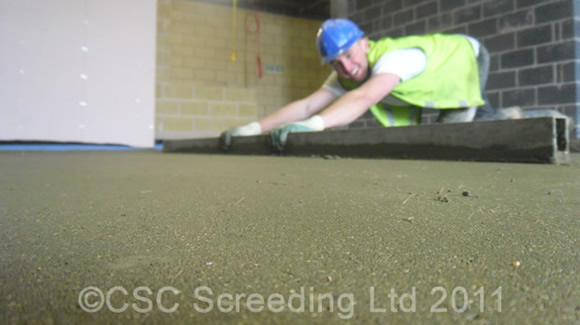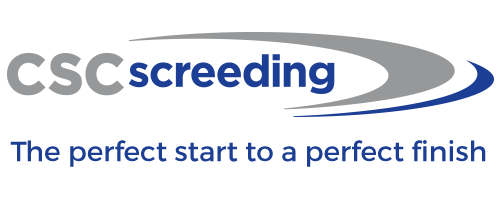
Importance of moisture testing
Importance of moisture testing for Screeding Projects

Innovations in floor screeding materials and screeding technology have played an immense role in revolutionizing the construction industry. Until quite recently, screeding had been the tedious, time consuming process where a long 110 day drying period was inevitable before the final floor finish (vinyl, wood, carpet etc) could be laid.
The general assumption that a 75mm thick traditional screed would take around 110 days for drying is drawn from the fact that the first 40 mm of screed usually dries at the rate of 1mm per day, and the rest at 0.5 mm per day thereafter. This time period is also highly dependant on good aeration and the regulation of temperature at 20 degree Celsius and a Relative Humidity of 50%.
Owing to this long waiting period, the general norm in the construction process is to apply the screed as early on as virtually possible. At the end of the drying period, the screed is tested by the floor finishing contractor and the moisture level assessed before the final ‘go-ahead’ is given for laying the final finish.
Several testing methods are in use in the industry to determine the moisture levels in the screeded surface. When the British Standard recommends a hair hygrometer test, most manufacturers rely on the Concrete Moisture tests (CM tests) for quicker and more reliable results. Both destructive and non destructive test methods are used for carrying out the CM tests.
The destructive method called the Calcium Carbide test is carried out by inserting a full depth screed sample collected from the test site into a vacuum flask, along with a calcium carbide reagent. The sample releases acetylene gas upon rotation, which in turn gives the level of moisture in the sample. The results are displayed directly on the gauge as CM%.
A more convenient non-destructive method of testing the moisture is measuring the moisture level directly from the screeded surface using an electronic Tramex meter. It is a quicker and easier method and yields accurate results.
It is generally the responsibility of the final flooring contractor to ensure that the moisture levels are within the stipulated limits, before installing the final finish. If the moisture levels are above the maximum range, the client has to be consulted and a decision made on as to how to proceed.
The three feasible options under such circumstances are – wait for a longer period, employ an independent third party to carry out a further test or go for the application of a surface Damp Proof Membrane (DPM). Application of DPM is however an expensive alternative and could turn out to be even more expensive than the screed itself. (£8-£13 per sm) This option is usually resorted to when there is a severe constraint of time.
An important thing to bear in mind when using screeds is not to miss the fine print. The specifications given by most manufacturers are based on the 20C and 50% RH benchmark, and it is ideal to give some extra drying time to ensure the best results. It is also important to choose accredited contractors, as screeds require specialized mixing equipments and skilled workmanship.
However, with innovative quick drying screed products now available in the markets, floor screeding is turning out to be less of a tedious task for the clients and contractors alike. Fast drying screed products in the form of additives and cement replacements from companies like FlexiDry have drastically brought down the long waiting period.
FlexiDry is a product that has proven track records of yielding excellent results in real environment even where the standard 20C benchmark could not be followed. FlexiDry F0 was tested with DMC Rail and Balfour Beatty before its installation at ‘Blackfriars Station’ and FlexiDry F1 was tried at ‘The Lancasters’ residential project on the Bayswater Road that overlooks Hyde Park, on an area of over 22,000 sm. Another project carried out by an Essex based principal contractor showed exceptional results, where the screed was dry enough for applying the final finish in 21 days, even when the temperature did not exceed 10C at any time during the entire period.
